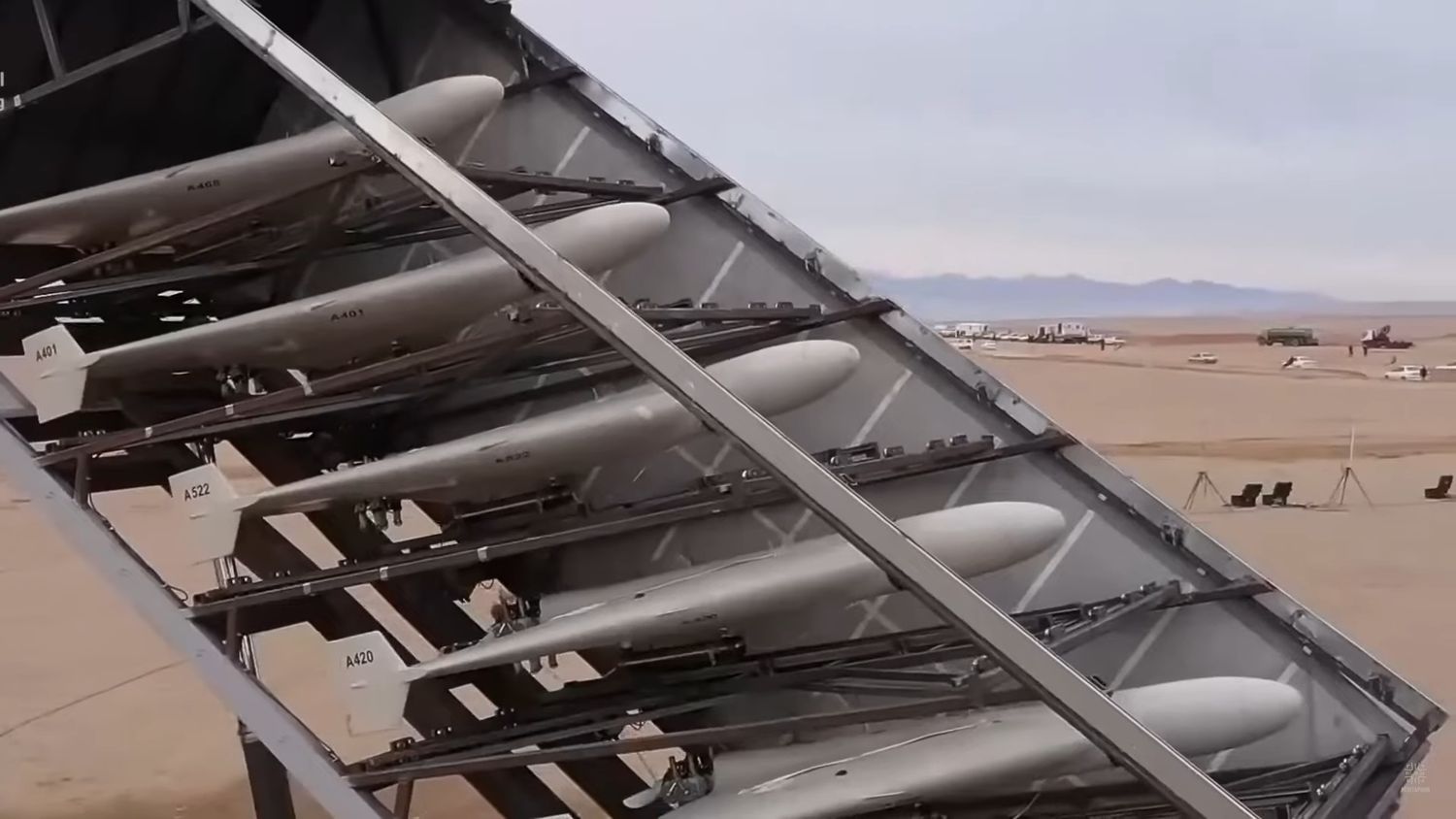Russia unleashes its Iranian drones against Ukrainian positions
Russia began to make intensive use of Iranian-supplied drones and loitering munitions to attack Ukrainian positions.
The first reports came from the northeastern Ukrainian front, where Iranian drones attacked Ukrainian forces around the city of Kharkov, recently recaptured by Kiev’s counteroffensive.
Iranian attack UAV Shahed-136, eliminated by the #UAarmy near Kupiansk, Kharkiv region.
?? and ??: A perfect union of two despots.
? @kms_d4k pic.twitter.com/M7sQ9PX1hJ— Defense of Ukraine (@DefenceU) September 13, 2022
And since Friday, videos began to emerge in social networks showing how Russians drone forces began to attack Ukrainian targets in Odessa and the surrounding area, using a large deployment of Iranian drones.
The most widely used system appears to be the Shahed-136 loitering munition, which in the Russian Armed Forces received the designation Geran-2.
See also: Iran set to send hundreds of drones to Russia for use in Ukraine
Shahed-136
Produced by Iran Aircraft Manufacturing Industries Corporation (HESA), it is a suicide drone/loitering munition designed to be used against ground targets at long ranges.
Each Shahed-136 battery consists of a transport truck carrying five munitions. For launch, the vehicle’s cargo compartment is tilted and the drones take off with the assistance of a rocket, which detaches after a few seconds.
Weighing 200 kg, the aircraft has a basic large delta wing shape, with stabilizing rudders at the tips. The nose section contains the explosive warhead (weighing between 30 and 40 kg), and according to several sources, the optical targeting system necessary for precision attacks is also located there, but no graphic evidence has yet emerged to confirm this. The engine is located at the rear of the fuselage and drives a two-bladed pusher propeller.
It is attributed a range of about 2,000 km, although the manufacturer did not make public the performance, and this value should be «taken with pincers».
The Shahed-136s are fired in multiple volleys, to saturate enemy anti-aircraft defenses. Apparently, it would have a low radar signature and can fly much of the route to the target at low altitude, making early detection even more difficult.
In operation over Ukraine
Having learned from the hard lessons the Ukrainians imparted on the effectiveness of the massive use of unmanned aerial systems (UAS) in modern warfare; Russia, unable to bring enough of its own UAVs to the front lines, was forced to buy them in large numbers from Iran. And they are already in action.
The attacks around Kharkov would have achieved the destruction of several artillery pieces, such as two 152mm self-propelled howitzers, two 122mm, an armored vehicle of the BTR type and some 155mm M777 pieces.
https://twitter.com/ShymkivOstap/status/1573823195169300480?s=20&t=-TzHVPi-dd2IS51VfadNIg
Although, surely, the most wanted target by the Russians must be the HIMARS rocket/missile batteries, which gave so many headaches to the invading forces.
Recently, Russia also began to carry out its attacks with loitering munitions against the port city of Odessa and its surroundings.
— Daniil Kuzmenko (@kuzmlive) September 23, 2022
The use of Iranian kamikaze drones seems to be proving successful. In addition to the results obtained in Kharkov, in Odessa, they attacked port administrative facilities, an action that claimed the life of one person.
And although the characteristics of these systems make it difficult to intercept them in time, this does not mean that it is impossible. Ukrainian official sources claim to have shot down, so far, a total of eight Shahed-136 munitions.
Хлопи з пво боги https://t.co/yFrgQKQwSl pic.twitter.com/RO6gBRiBAz
— M: аr:a (@kava220) September 23, 2022
Also near Odessa, Ukrainian air defenses managed to shoot down an Iranian Mohajer-6 type UAV, designed for reconnaissance, surveillance, artillery fire correction and attack, using its own guided munitions, analogous to the Turkish Bayraktar TB2. The device fell into the sea and was recovered for study.
On September 23, anti-aircraft fighters of the "Southern" Air Command of the Air Force of the Armed Forces of Ukraine shot down a multi-purpose strike UAV of Iranian production "Mohajer-6", designed for reconnaissance, surveillance, reconnaissance, and fire damage. pic.twitter.com/K5zyn70LYv
— Ukrainian Air Force (@KpsZSU) September 23, 2022
All indications are that the war is going to be of a long one, and the large mobilization ordered by Putin following the successes of Zelensky’s forces in recapturing over 8,500 km2 of territory suggests as much.
It remains to be seen whether the massive use of Iranian UAS and loitering munitions succeeds in destroying enough Ukrainian vehicles and artillery pieces for Russia to gain enough time to squeeze its defense industry and regain the comparative advantage of means it enjoyed at the beginning of the conflict. What is clear is that the Ukrainian artillery forces will no longer be able to operate as openly and in broad daylight as they have been doing for some weeks.


Para comentar, debés estar registradoPor favor, iniciá sesión